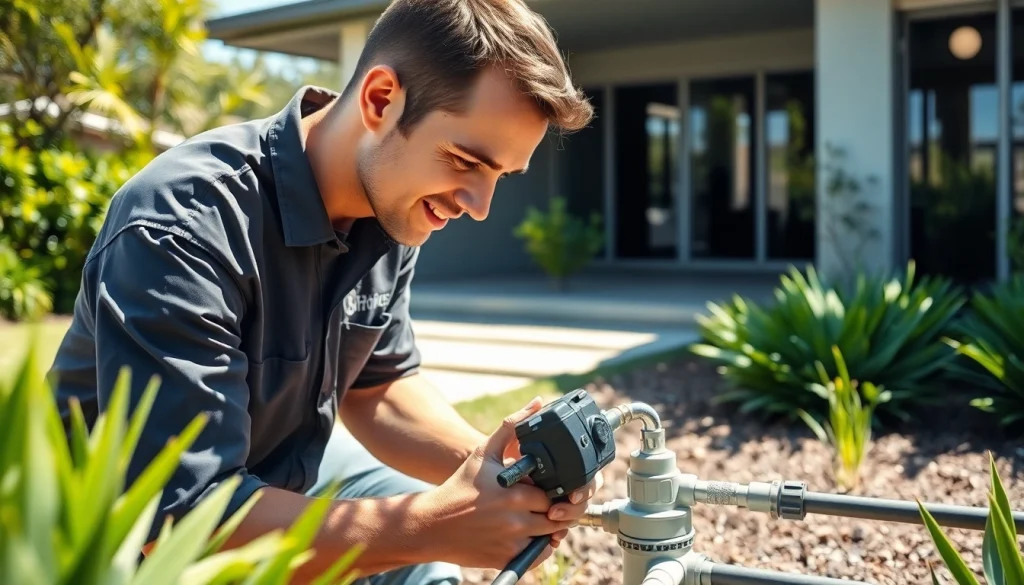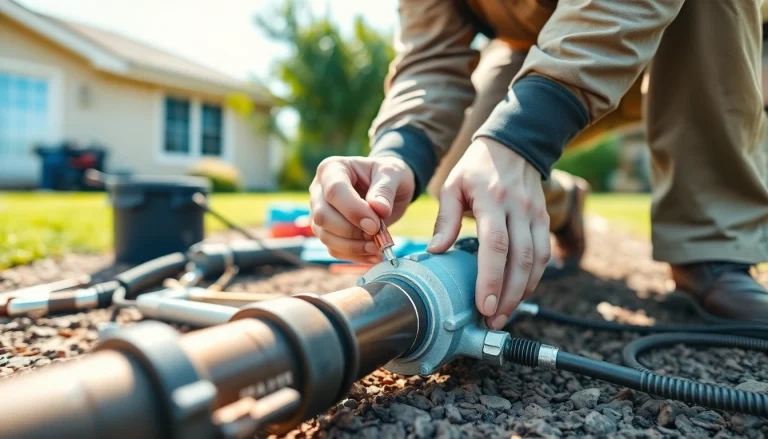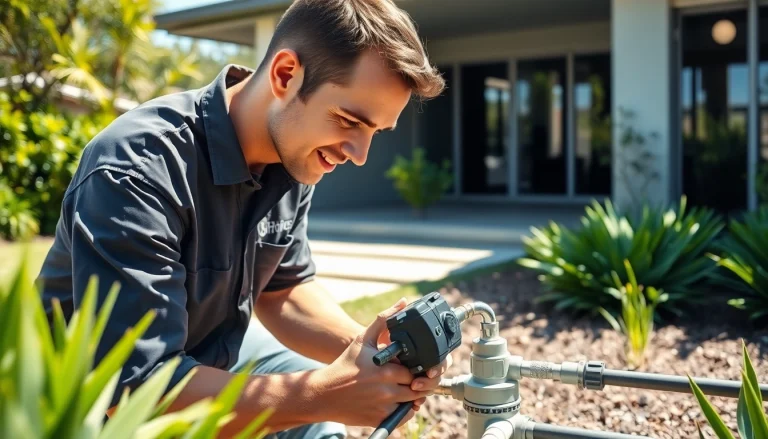
Understanding Termite Reticulation Systems
What is a Termite Reticulation System?
A termite reticulation system is a comprehensive pest control method designed to protect buildings from termite infestations. Unlike traditional treatments, which may involve a one-time application of insecticides, a reticulation system comprises a series of underground pipes. Installed around the perimeter of a structure, these pipes continuously distribute a protective chemical treatment throughout the soil, creating a barrier against termites. This system is particularly popular in areas prone to termite invasion, as it offers ongoing protection without frequent reapplications.
How Do Termite Reticulation Systems Work?
The functionality of a termite reticulation system hinges on its network of pipes and periodic chemical refills. When termites approach the treated area, they come into contact with the chemical barrier, which disrupts their life cycle. The system is connected to various access points, allowing pest control professionals to effectively refill the chemicals without needing to excavate the entire area. This method is efficient and minimizes disturbance to the landscaping or building structure.
Importance of Regular Refills for Maintenance
Maintaining the efficacy of a termite reticulation system requires regular refills of the chemical solution. Over time, the chemicals break down and lose their effectiveness, which can leave a property vulnerable to termite attacks. Regular maintenance not only ensures the ongoing protection of your home but also extends the life of the system. Professionals recommend termite reticulation system refills every three to eight years, depending on the specific chemicals used and environmental factors.
The Process of Termite Reticulation System Refills
Steps for Effectively Refilling the System
Refilling a termite reticulation system involves several detailed steps to ensure both efficacy and safety. Typically, this process includes:
- Assessment: A trained technician assesses the system for chemical levels and structural integrity.
- Access Point Preparation: The technician locates and prepares the access points for refilling.
- Chemical Preparation: The appropriate chemicals are mixed according to the manufacturer’s specifications.
- Refilling: The technician attaches the refilling equipment to the access points and injects the new chemical solution into the system.
- Testing: After refilling, the system is tested to ensure that it meets the required standards of protection.
Tools and Equipment Required
To successfully refill a termite reticulation system, the following tools and equipment are essential:
- Chemical Injector: Used to introduce new chemicals into the system.
- Access Point Key/Tool: A specialized tool for opening access points.
- Protective Gear: Including gloves, goggles, and respiratory masks to ensure technician safety.
- Measuring Equipment: To accurately determine the correct chemical quantities needed.
Safety Precautions during Refill
Safety during the refilling process is paramount. Technicians must adhere to strict safety protocols, including:
- Wearing protective clothing and equipment to prevent direct contact with chemicals.
- Following chemical handling guidelines provided by manufacturers.
- Ensuring that the area is well-ventilated to minimize inhalation risks.
Frequency of Termite Reticulation System Refills
How Often Should You Refill Your System?
The frequency of refills for termite reticulation systems can vary significantly based on several factors, including the type of chemicals used, environmental conditions, and the level of termite threat in the area. Generally, refills are recommended every three to five years, but some systems might require attention every two years or as long as eight years. Regular inspections will help determine the appropriate timing for refills.
Factors Affecting Refill Frequency
Several factors can influence how often a termite reticulation system needs to be refilled:
- Environmental Conditions: Areas with high rainfall or flooding may require more frequent refills due to chemical dilution.
- Soil Composition: Sandy soils may lose chemicals faster than clay-based soils, affecting refill schedules.
- Type of Termite Threat: If there is a known termite presence or increased activity, more regular refills may be necessary.
Signs Your System Needs Maintenance
Awareness of maintenance signs is crucial for homeowners. Indicators that your termite reticulation system may need a refill or maintenance include:
- Visible signs of termite activity around the property.
- Changes in the soil around access points, such as unusual swelling or sinking.
- Reports or findings from pest inspections indicating a decrease in chemical effectiveness.
Cost Considerations for Termite Reticulation Refills
Average Costs and Budgeting for Refills
The costs associated with termite reticulation system refills can vary widely based on several factors, such as the size of the home, the specific chemicals used, and the pest control service provider. On average, homeowners can expect costs to range between $300 to $800 for a complete refill. It’s advisable to budget for these expenses every few years, factoring in potential increases in service fees as materials and labor costs fluctuate.
Comparing Professional vs. DIY Refills
While some homeowners may consider DIY methods to refill their termite reticulation systems, several reasons underscore the importance of hiring a professional:
- Expertise: Professionals have trained knowledge regarding chemical applications and local regulations.
- Safety: Proper safety protocols are critical when handling hazardous materials.
- System Integrity: Professionals ensure that the system is correctly maintained, reducing future risks.
Cost-Saving Tips for Termite Management
Homeowners looking to manage costs can consider the following strategies:
- Schedule regular pest inspections to catch issues early.
- Invest in preventative measures and maintenance to prolong the life of the reticulation system.
- Ask about package deals with pest control providers for regular servicing and chemical refills.
Choosing the Right Pest Control Service for Refills
Questions to Ask Your Pest Control Provider
When selecting a pest control service for your termite reticulation system refills, consider asking the following questions:
- What is your experience with refilling termite reticulation systems?
- What products do you use, and can you provide safety data sheets?
- Can you provide references from previous clients?
Evaluating Services and Pricing
Comparing services and pricing is essential. Here’s how to evaluate potential providers:
- Check for certifications and licenses in pest control management.
- Read reviews and testimonials from former clients to gauge satisfaction.
- Request quotes from multiple providers to ensure competitive pricing.
Reviews and Recommendations for Best Practices
Exploring reviews and standing recommendations can significantly inform your decision. Reliable sources of information include:
- Online review platforms and local business directories.
- Community forums and social media groups dedicated to pest management.
- Recommendations from neighbors who have had similar services performed.





